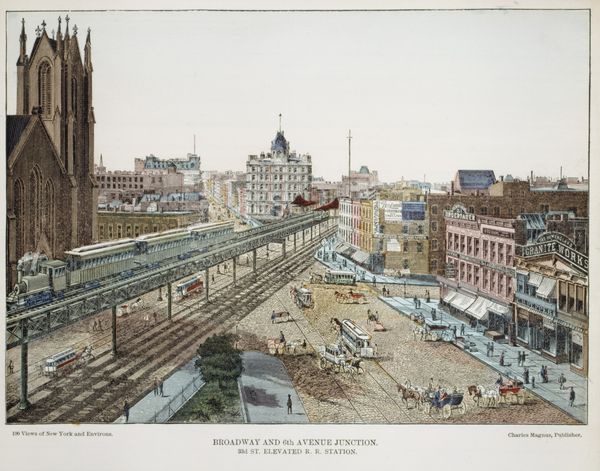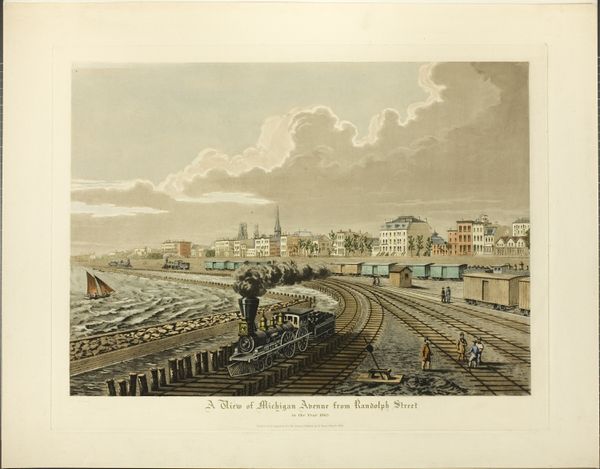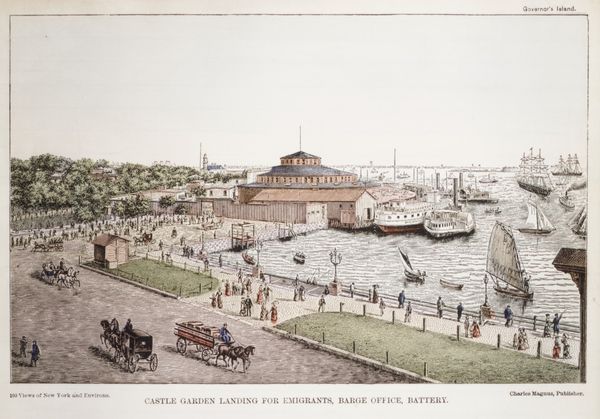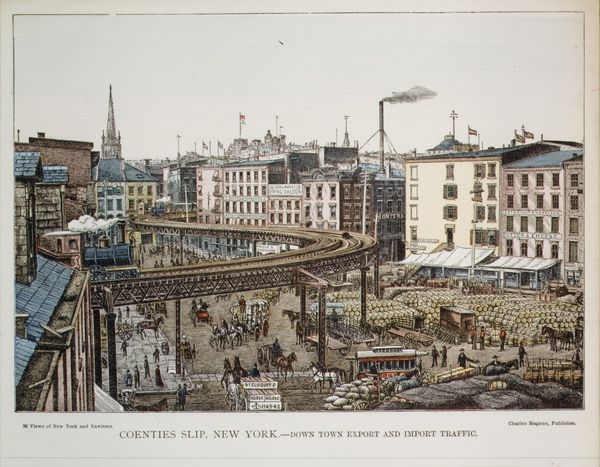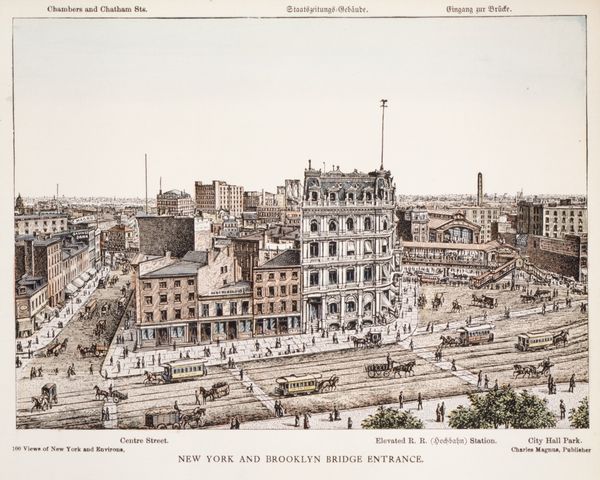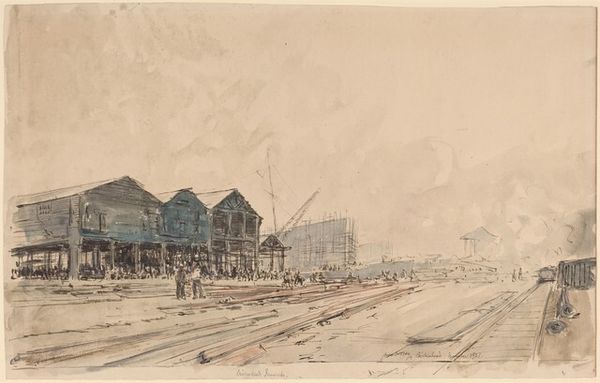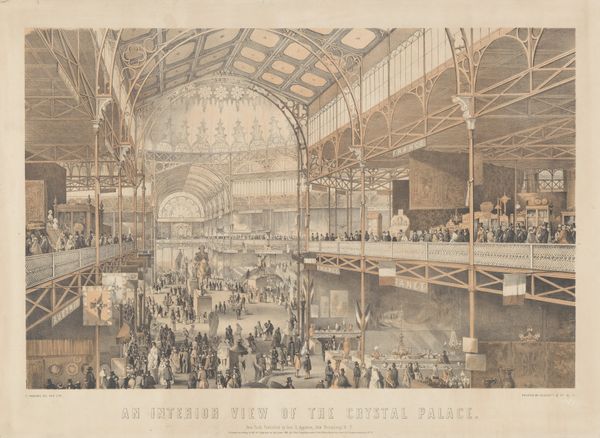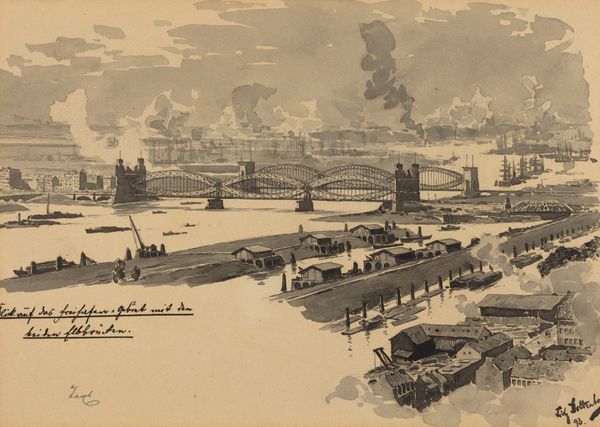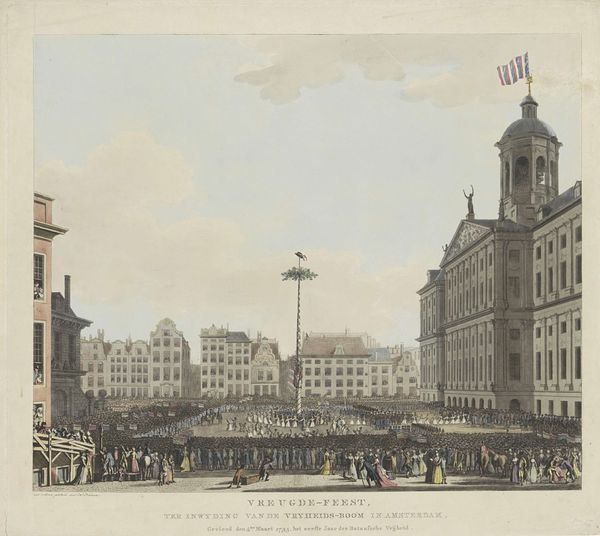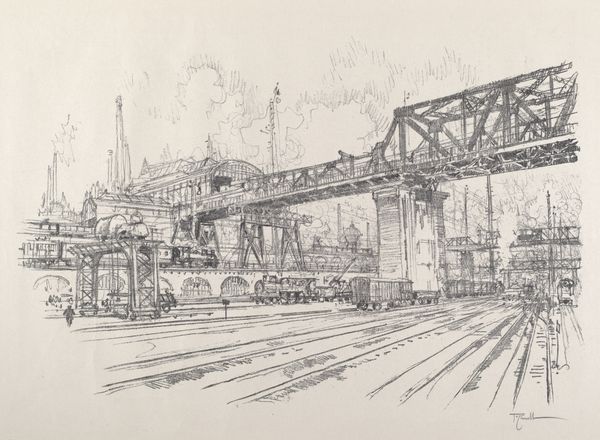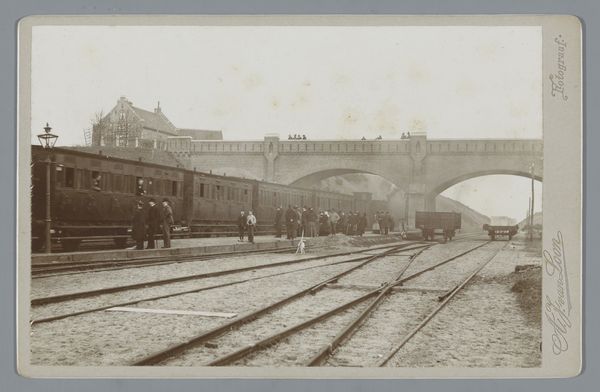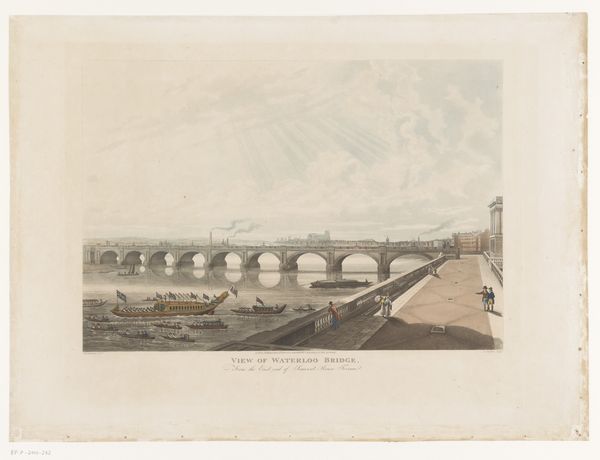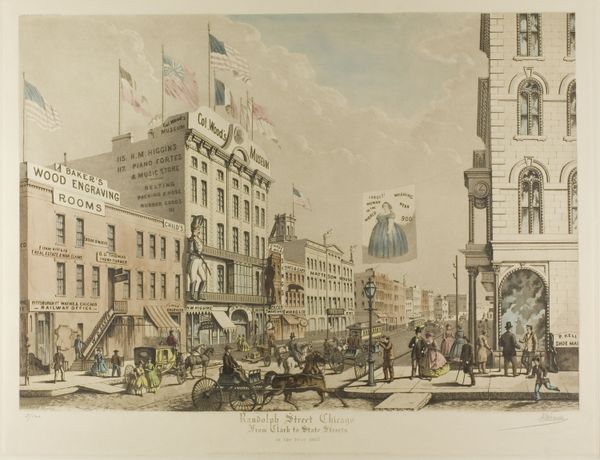
Chatham Square Elevated Railroad Crossing 1850 - 1900
0:00
0:00
drawing, lithograph, print
#
drawing
#
lithograph
# print
#
cityscape
#
realism
Dimensions: 11 x 8 1/2 in. (27.9 x 21.6 cm)
Copyright: Public Domain
Curator: "Chatham Square Elevated Railroad Crossing," likely dating from the latter half of the 19th century, a lithograph print published by Charles Magnus & Company, presents a vibrant streetscape dominated by railway infrastructure. What’s your immediate take, Editor? Editor: I am struck by the layering and the dense arrangement of urban transit—it almost feels claustrophobic, seeing that many people working with or moving between mechanical modes. Curator: Indeed. Consider the intricate cross-hatching of the elevated train supports, creating a visual texture and an illusion of depth. The steam engine becomes the focal point; its darker hues contrasted with the soft pastel washes. This lends to a spatial depth that implies urban life. Editor: Precisely. We see how integral the labor involved was - the physical act of making the print with these techniques emphasizes craft and human effort alongside portraying technology. Curator: The style, rooted in realism, aims to depict an unvarnished slice of urban existence. But consider the formal tension: how does the artist reconcile industrial might with artistic sensibility? How does it use representational and semiotic value in portraying modernity? Editor: The artist appears concerned with recording and celebrating the technologies that are essential to our life! You can imagine the print itself as a manufactured object playing into its circulation; it might be viewed as a celebration or advertising about elevated transportation, but it reveals how bound it is to material and processes to communicate its purpose! Curator: The interplay of diagonal tracks, vertical architectural forms, and human figures orchestrates the scene, giving order within the apparent chaos of industrializing New York. What feelings did you find present beyond the sense of overcrowding? Editor: Wonder comes to mind. Not for some elevated aesthetic notion, but at a tangible wonder associated with an engineering advancement promising to enhance accessibility, altering urban dwellers daily lives. Curator: To your earlier note of "layers," how are the colors—applied delicately—affecting a mood that could resonate as wonderous rather than merely utilitarian or stressful? Editor: Their restraint imbues a soft filter with nostalgic quality. This hints towards the complicated interplay between progress, labor, and the sentimental view that it provides now, more than a century later!
Comments
No comments
Be the first to comment and join the conversation on the ultimate creative platform.
